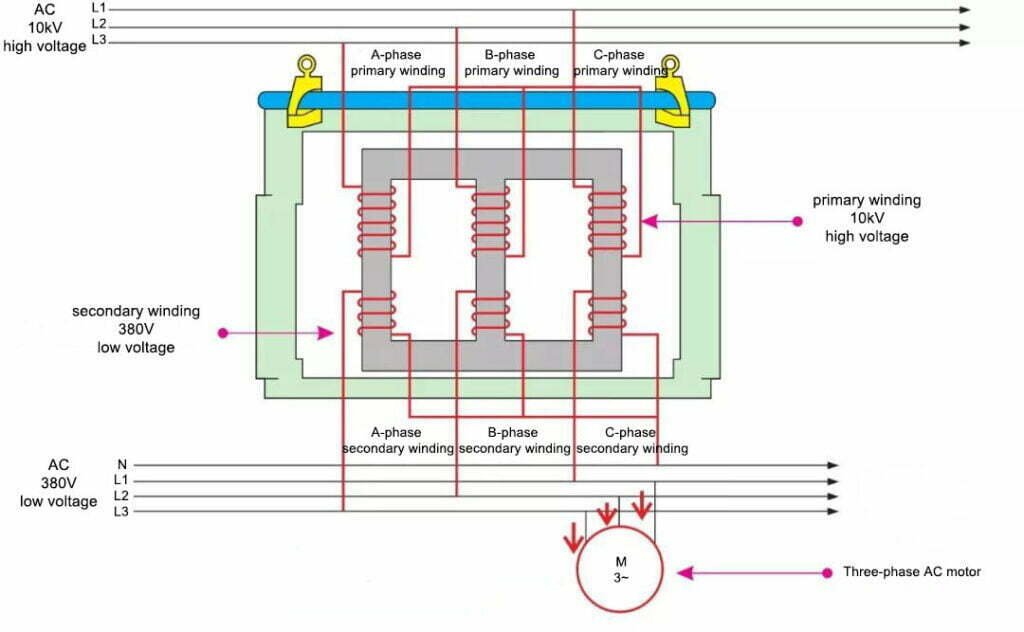When an electric current is introduced to an inductor or something that can store magnetic energy, it will respond in different ways depending on the specific attributes of that device. There are two main types of transformers: single phase transformer and three phase transformer. Both of these transformer types have their unique uses and applications. So if you’re interested in learning more about how they work before choosing one for your next project, keep reading!
First, A single-phase transformer is a special type of electrical transformer designed to supply single-phase alternating current (AC). It has two equal-sized coils with a connecting wire called a primary winding. The transformer is installed between your electrical service and the appliance you want to use. The primary winding connects to a single-pole switch that allows you to turn on and off the supply of electricity from the transformer.

What is a Three Phase Transformer?
While a single-phase transformer essentially utilizes two coils of wire to create a magnetic field, a three-phase transformer uses three coils of wire.

How Does a Single Phase Transformer Work?
Remember that with a single-phase transformer, you have two coils of wire that are wound around an iron core. When a current is applied to the two coils, the magnetic field created by the current passing through the coils is similar to the magnetic field of a single-phase inductor.

As a result, the iron core becomes magnetized, and electromagnetic induction occurs. It means that the current entering the coil is being transformed into a voltage. With a single-phase transformer, the voltage is higher than the voltage that was applied to the coils.
How Does Three-Phase Transformers Work?
When you have three coils of wire wound around an iron core, it creates a three-phase transformer. The current is split between the three coils of wire. When the current enters the three-phase transformer, it creates a magnetic field. And it will induce a current in the iron core.

The current in the iron core creates another magnetic field. The two magnetic fields created by the two coils and the iron core interact with each other. This results in current being transferred between the coils. Also, the current is distributed equally among the three coils. It means that the voltage is lower than the voltage that was applied to the coils.
Different Types of Single Phase Transformers
There are many different types of single-phase transformers out there, including step-up transformers, step-down transformers, and autotransformers.
A step-up transformer is designed to increase the voltage of an alternating current (AC) voltage source by using inductive coupling between two separate windings.
An autotransformer, as the name suggests, is a type of single-phase transformer that does not have a secondary winding, but rather is designed to provide a single voltage output.
Step-down transformers are designed to decrease the voltage of an AC voltage source by using inductive coupling between two separate windings.
Different Types of Three-Phase Transformers
There are two types of three-phase transformers: auto transformers and constant voltage transformers.
An auto transformer changes the voltage according to demand. That means that as more electricity is needed, the voltage will increase. For example, if you are running a refrigerator from a 12 VDC outlet, you can connect a 24 VAC auto transformer to convert it to 24 VDC. The voltage will change automatically when more electricity is needed.
If you need a specific voltage, you can use a constant voltage transformer. This will maintain a fixed voltage that doesn’t change depending on the load. The constant voltage transformer can be used in combination with an auto transformer if you need both specific and variable voltages at the same time.
Summing up
This article introduces the difference between single and three phase transformers and explain how they work. At last, we recommend what types of transforemer you should choose. We hope it’ll be helpful for you, if any question, please contact us.







